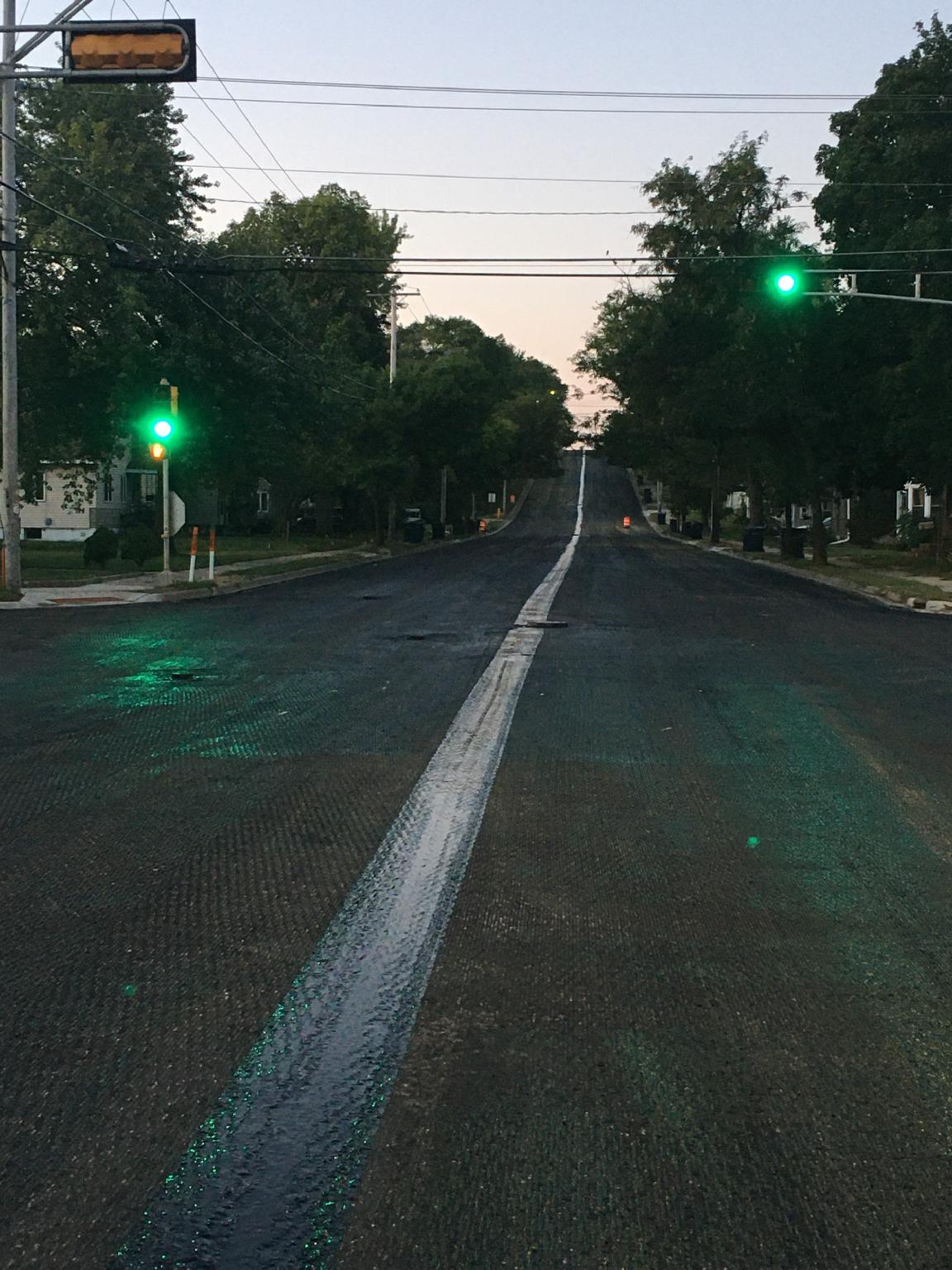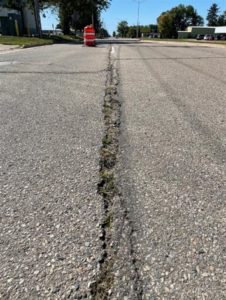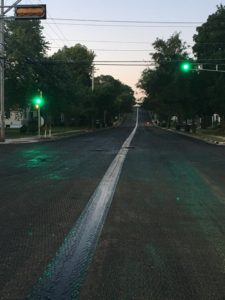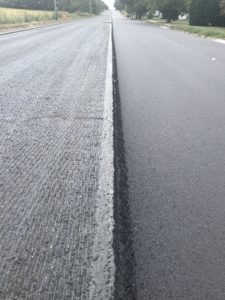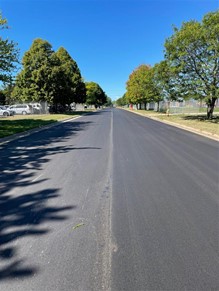On September 9, the city of Janesville, Wisconsin recorded their first use of VRAM on Beloit Avenue. This project is part of the City of Janesville’s 2021 Street Rehabilitation Program. The road was tacked Wednesday evening September 8. Then pre-dawn on the Thursday, 4,663 LF of VRAM was placed. Later on Thursday 3,391 tons of HMA asphalt was placed with a thickness of 2.5”. The road was back open overnight. The customer was impressed with how the VRAM didn’t track and they are interested in a couple locations listed on next year’s street program where they are considering using VRAM. The City of Janesville’s paving contractor is Rock Road and ProTack is their subcontractor. VRAM, a materials approach to preserving centerline joints, is a void reducing asphalt membrane.
Dave Stanczak, Specialty Products Area Manager for Asphalt Materials, notes that, “the City of Janesville is always looking at innovative ideas to improve their roadways. This project is just one more example of how they are on the forefront on new technology in roadbuilding. They understand when roads last longer, infrastructure dollars go further!”
Studies have shown that longitudinal joints in pavements are often the weakest areas of a road. Typically the joints are low in density, high in voids and thus are highly permeable. These areas become conduits to air and water infiltration which leads to damage and premature pavement failure. You will note in the picture above how longitudinal joint problems are the Achilles’ Heel of many roads.(1)
How VRAM Works?
Prior to paving, VRAM material is sprayed on an 18” wide location directly under the area where the longitudinal joint will be located. When the HMA is placed and compacted over VRAM, the material migrates upward into the fresh pavement. It fills voids to help ensure the joint is less permeable. For these reasons, VRAM is referred to as a materials approach to fixing permeability issues at the longitudinal joint.(2) The picture below is indicative of the VRAM being sprayed under the area where the final HMA will be placed.
The picture below is after the first HMA section has been placed.
The picture below is of the Janesville project after VRAM has been sprayed and the hot mix asphalt (HMA) has been placed. After placement of HMA, heat causes the VRAM material to migrate upward, filling voids and reducing permeability of air and water.
Asphalt Materials, Inc. is a midwestern based company that has been involved in the asphalt business since 1956, supplies an industry leading VRAM named J-Band®. Since 2002, J-Band has a proven track record of extending the life of roads by protecting longitudinal joints and improving the performance of the entire pavement in 20 states and The District of Columbia.
You can view a video animation of how J-Band works on our homepage at https://thejointsolution.com/
———————————————
Editor’s Notes:
(1) The density and air void content of asphalt mixtures affect the durability and performance of asphalt pavements. Pavement longitudinal joints typically have a lower density than the mat because they receive less compaction than the center section of the mat for various reasons. The higher air void percentages resulting from lower densities can lead to high permeability and allow water infiltration, which in turn can cause moisture-induced damage and decrease base and subbase support to the pavement, reducing pavement life. Void-reducing asphalt membrane (VRAM) has been used at the longitudinal joints of asphalt pavements to achieve higher densities and prevent moisture infiltration, thereby reducing deterioration at the longitudinal joints. VRAM is applied before the hot-mix asphalt (HMA) layer is placed and migrates into the HMA to fill 50% to 70% of the air voids. (Iowa State University Study for Minnesota Department of Transportation, DEC. 2020)
(2)VRAM, Void Reducing Asphalt Membrane is referred to in Illinois as LJS, which stands for Longitudinal Joint Sealant.

